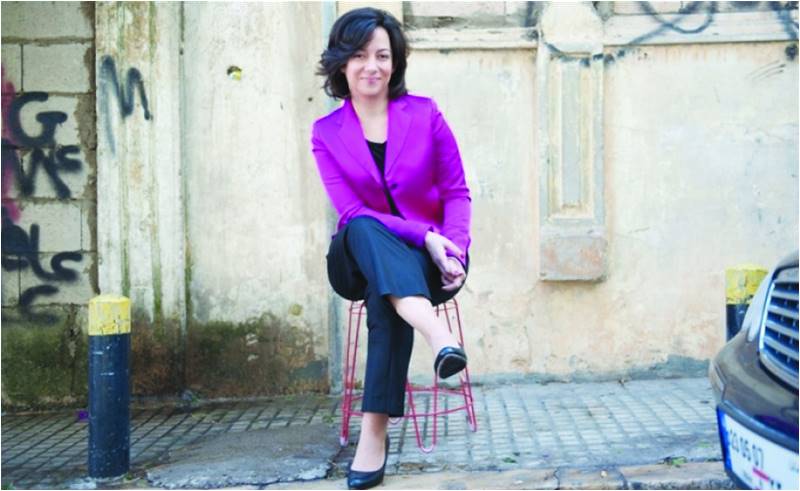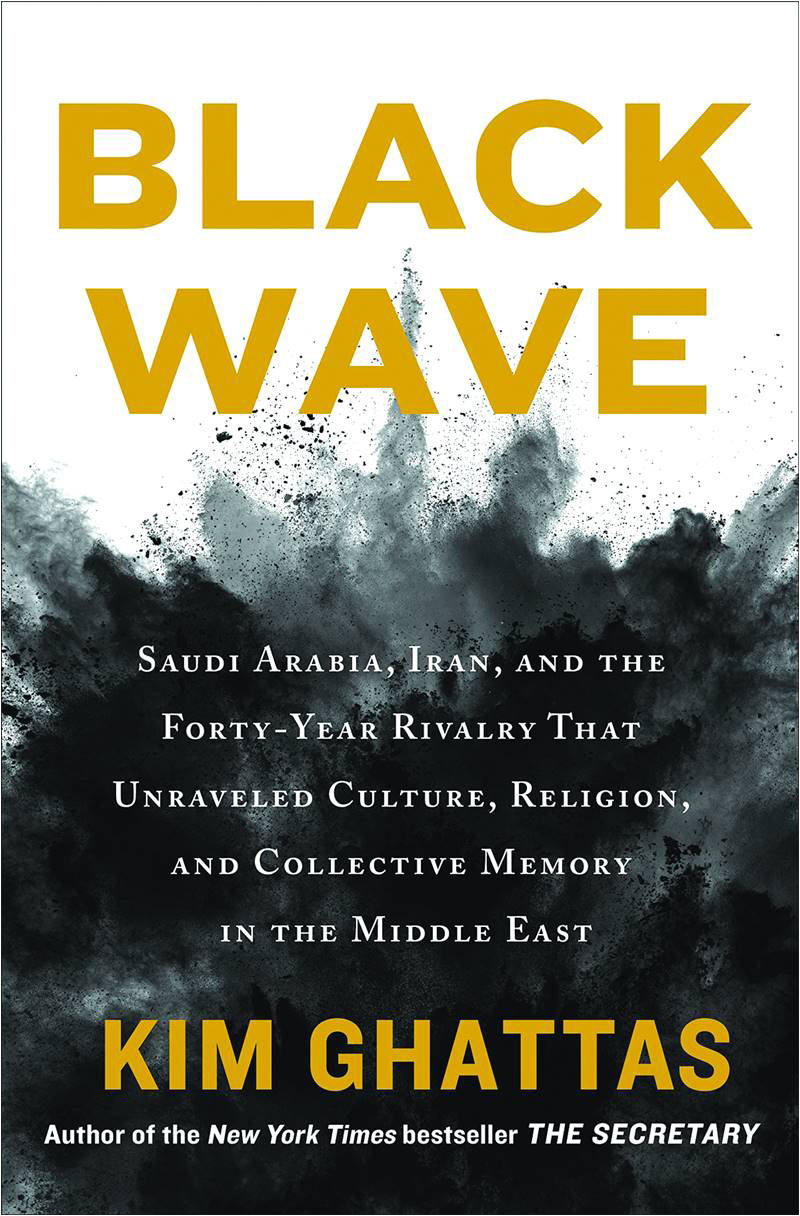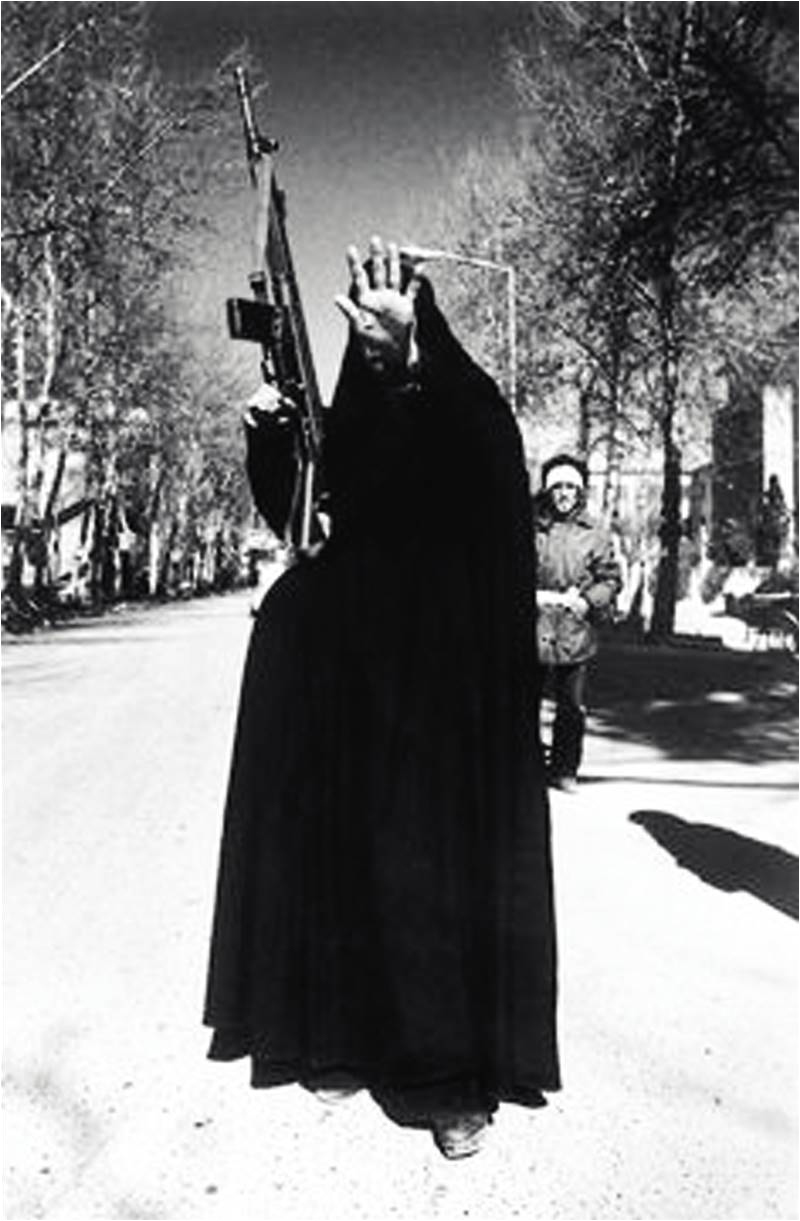
I spent much of the early 2000s traveling and working through the Middle East – from Morocco through Yemen, from Syria and Egypt to Pakistan. Those were the days when one could land easily at Sana’a airport and walk freely through the souks of Damascus.
I remember observing the waves of change – the Jasmine Revolution that overturned Tunisia and the Arab Spring that rocked Egypt. Women began wearing veils more often in the streets. It was noticeable over time how local people would talk about the effect of foreign money flowing freely into their countries, heightening a consciousness of religions and within them sectarian differences.

These impressions have stayed with me, the awareness – born of observation rather than critical analysis – that we were going through similar experiences in the Middle Eastern world, regardless of national boundaries.
Kim Ghattas (a Lebanese-Dutch writer) addressed these issues when she spoke recently in Washington DC on her book Black Wave: Saudi Arabia, Iran, and the Forty-Year Rivalry That Unraveled Culture, Religion, and Collective Memory in the Middle Easter cogent and incisive analysis is a timely reminder of these developments in an area that has been in perpetual turmoil since 1979.
She certainly has the requisite experience to undertake such a challenge. Brought up in Beirut during the Lebanese Civil War, she spent over two decades covering the Middle East for the BBC. She was then stationed in Washington DC, covering the then Secretary of State Hillary Clinton when she traveled the world. Since 2014, she has spent time in Lebanon and traveled the wider region (including Pakistan). She has explored at first-hand the cultural and political impact of the forty-year-old rivalry between the bastions of the Muslim world: a Sunni/Wahabi Saudi Arabia and a Shia Iran.

The core thesis of her book is interesting. She attributes most of the changes in the greater Middle East as beginning in one single year: 1979. She presents a chronological analysis of various countries from 1979 to date.
That fateful year, she argues, marked so many momentous events – prominent amongst them, President Sadat of Egypt striking peace with Israel; the collapse of the Shah of Iran making way for Ayatollah Khomeini; the execution of Bhutto and ensuing rule of Islamic law by General Zia-ul-Haq in Pakistan.
Ghattas’ book explores the yin and yang of the Muslim world – the House of Saud pitted against the Irani Shia majority. And so a new Great Game begins, played this time not in 19th-century Afghanistan but in the Middle East with a battle spawning the rise of sectarian violence, the popularity of the veil as a symbol of religion and state-sponsored proxy wars more deadly than the casualties in land-locked Afghanistan.
Ghattas, at her book launch in Washington DC, spoke warmly of Pakistan, a country she has clearly observed closely, and referred to it often as the open war between sectarian forces – much as her own beloved Beirut has been through the Iranian-sponsored Hezbollah fighting the Saudi sponsored groups.
She makes us note the competition among countries as to who should be the bastion of the Muslim world. She mentions how General Zia-ul-Haq was proud that he announced Islamic shariah law in Pakistan a day before the Ayatollah could in Iran. At the same time that Pakistani TV presenters were being told by state TV that they were not allowed to wear make-up and that they had to wear dupattas on television. In Egypt there as a wave of conservatism. There, actresses would be funded for trips to Saudi Arabia and return to Egypt to spread the veil through Saudi-sponsored movies. Ghattas skillfully weaves hilarious anecdotal stories – about how Egyptian actresses were better paid than the traditional and more popular belly-dancers with thoughtful political insights.
Early on in her book, Ghattas asks a question that we often ask ourselves in Pakistan – and as it appears, others do throughout the world these days – “What happened to us?” All of us have had these conversations. “Why is the world of our childhoods and adulthood of our parents so different from our own?”
Beirut, like Karachi or Kabul in the 1960s, was a place of cosmopolitanism, creativity and religious tolerance. It was a fertile era of literature and intellectual renaissance. Like Ghattas, I grew up listening to my elders recounting stories of the 1960s and ‘70s with wistful nostalgia. They would talk of how women dressed without self-consciousness, wore what they wanted and how Pakistani newly-weds honeymooned in Kabul.
Being multi-sectarian and multi-cultural were part of the social fabric of life. Now, we are increasingly prone to the effects of the state-sponsored ‘guidance’ - whether in culture, politics or society. The story is the same: whether in Tunisia, Lebanon or Egypt. Terrorism, violence and religious exclusion have become a permanent part of our daily lexicon.
Black Wave has been widely reviewed in the U.S and European press. Ghattas promoted her book through book tours, including appearances on television talk shows such as the Trevor Noah show. They are worth watching, even as re-runs. Nowhere else will you hear such analysis from an Arab woman’s perspective – especially when it is backed by years of experience in journalism. That alone gives her narrative a strong sense of integrity and independence.
Will there ever be an end to this confrontation between Sunni and Shia? Or will it lead to a schism like that between the Roman Catholics and the Protestants that has plagued Christianity? Are the present conflicts our equivalent of the Crusades? Has the unity once represented by Jerusalem been divided between Makkah and Qom?
Ghattas’ book provides some of the answers – though more critical analysis of our own history could help us to be clearer about solutions.
I remember observing the waves of change – the Jasmine Revolution that overturned Tunisia and the Arab Spring that rocked Egypt. Women began wearing veils more often in the streets. It was noticeable over time how local people would talk about the effect of foreign money flowing freely into their countries, heightening a consciousness of religions and within them sectarian differences.

These impressions have stayed with me, the awareness – born of observation rather than critical analysis – that we were going through similar experiences in the Middle Eastern world, regardless of national boundaries.
Kim Ghattas (a Lebanese-Dutch writer) addressed these issues when she spoke recently in Washington DC on her book Black Wave: Saudi Arabia, Iran, and the Forty-Year Rivalry That Unraveled Culture, Religion, and Collective Memory in the Middle Easter cogent and incisive analysis is a timely reminder of these developments in an area that has been in perpetual turmoil since 1979.
She certainly has the requisite experience to undertake such a challenge. Brought up in Beirut during the Lebanese Civil War, she spent over two decades covering the Middle East for the BBC. She was then stationed in Washington DC, covering the then Secretary of State Hillary Clinton when she traveled the world. Since 2014, she has spent time in Lebanon and traveled the wider region (including Pakistan). She has explored at first-hand the cultural and political impact of the forty-year-old rivalry between the bastions of the Muslim world: a Sunni/Wahabi Saudi Arabia and a Shia Iran.

The core thesis of her book is interesting. She attributes most of the changes in the greater Middle East as beginning in one single year: 1979. She presents a chronological analysis of various countries from 1979 to date.
That fateful year, she argues, marked so many momentous events – prominent amongst them, President Sadat of Egypt striking peace with Israel; the collapse of the Shah of Iran making way for Ayatollah Khomeini; the execution of Bhutto and ensuing rule of Islamic law by General Zia-ul-Haq in Pakistan.
Ghattas’ book explores the yin and yang of the Muslim world – the House of Saud pitted against the Irani Shia majority. And so a new Great Game begins, played this time not in 19th-century Afghanistan but in the Middle East with a battle spawning the rise of sectarian violence, the popularity of the veil as a symbol of religion and state-sponsored proxy wars more deadly than the casualties in land-locked Afghanistan.
Ghattas, at her book launch in Washington DC, spoke warmly of Pakistan, a country she has clearly observed closely, and referred to it often as the open war between sectarian forces – much as her own beloved Beirut has been through the Iranian-sponsored Hezbollah fighting the Saudi sponsored groups.
She makes us note the competition among countries as to who should be the bastion of the Muslim world. She mentions how General Zia-ul-Haq was proud that he announced Islamic shariah law in Pakistan a day before the Ayatollah could in Iran. At the same time that Pakistani TV presenters were being told by state TV that they were not allowed to wear make-up and that they had to wear dupattas on television. In Egypt there as a wave of conservatism. There, actresses would be funded for trips to Saudi Arabia and return to Egypt to spread the veil through Saudi-sponsored movies. Ghattas skillfully weaves hilarious anecdotal stories – about how Egyptian actresses were better paid than the traditional and more popular belly-dancers with thoughtful political insights.
Early on in her book, Ghattas asks a question that we often ask ourselves in Pakistan – and as it appears, others do throughout the world these days – “What happened to us?” All of us have had these conversations. “Why is the world of our childhoods and adulthood of our parents so different from our own?”
Beirut, like Karachi or Kabul in the 1960s, was a place of cosmopolitanism, creativity and religious tolerance. It was a fertile era of literature and intellectual renaissance. Like Ghattas, I grew up listening to my elders recounting stories of the 1960s and ‘70s with wistful nostalgia. They would talk of how women dressed without self-consciousness, wore what they wanted and how Pakistani newly-weds honeymooned in Kabul.
Being multi-sectarian and multi-cultural were part of the social fabric of life. Now, we are increasingly prone to the effects of the state-sponsored ‘guidance’ - whether in culture, politics or society. The story is the same: whether in Tunisia, Lebanon or Egypt. Terrorism, violence and religious exclusion have become a permanent part of our daily lexicon.
Black Wave has been widely reviewed in the U.S and European press. Ghattas promoted her book through book tours, including appearances on television talk shows such as the Trevor Noah show. They are worth watching, even as re-runs. Nowhere else will you hear such analysis from an Arab woman’s perspective – especially when it is backed by years of experience in journalism. That alone gives her narrative a strong sense of integrity and independence.
Will there ever be an end to this confrontation between Sunni and Shia? Or will it lead to a schism like that between the Roman Catholics and the Protestants that has plagued Christianity? Are the present conflicts our equivalent of the Crusades? Has the unity once represented by Jerusalem been divided between Makkah and Qom?
Ghattas’ book provides some of the answers – though more critical analysis of our own history could help us to be clearer about solutions.

